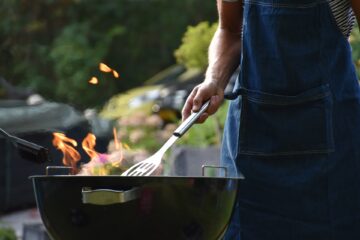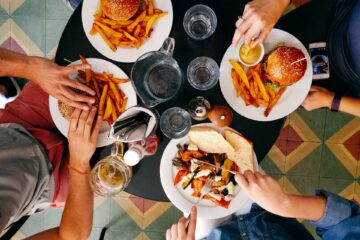If you’re an avid bean lover or just someone who’s curious about the science of cooking, you may have wondered how much beans expand when they are cooked. In this article, we’ll explore this topic in detail, including the factors that affect the expansion of beans, how much beans actually expand when cooked, and some tips for cooking beans to minimize expansion.
Understanding Bean Cooking and Expansion
When we cook beans, they undergo a significant expansion, both in volume and weight. This is due to the absorption of water and other ingredients added during the cooking process. The expansion of beans is a common occurrence that happens during cooking, and it is essential to understand how it works to prevent overcooking and undercooking.
The expansion of beans happens because the dry beans absorb water as they cook, and this causes them to swell. The water enters the beans through their pores, and as the beans absorb the water, they expand, becoming softer and more tender. The expansion of the beans can vary depending on the type of beans being cooked, the cooking method, and the length of time they are cooked. Some beans expand more than others, and the amount of expansion can affect the texture and taste of the final dish.
How Much Do Beans Expand When Cooked?
When it comes to cooking beans, it’s not uncommon for home cooks to wonder how much the beans will expand during the cooking process. The expansion of beans is dependent on several factors, including the type of beans, the amount of water used during cooking, and the cooking method.
In general, beans will expand by approximately two to three times their dry size when cooked. For example, if you start with one cup of dry beans, you can expect to have approximately two to three cups of cooked beans. However, some types of beans may expand more or less than this average range, so it’s important to keep this in mind when cooking.
It’s also important to note that the cooking time can vary depending on the size and age of the beans. Older beans may take longer to cook and may not expand as much as fresher beans. Additionally, cooking beans in a pressure cooker can speed up the cooking time and may cause them to expand more than if they were cooked using traditional stovetop methods.
Overall, it’s important to measure your dry beans carefully and adjust the amount of water and cooking time accordingly to ensure that you end up with the desired amount of cooked beans.
Tips for Cooking Beans
Here is the detailed text for point IV:
Cooking beans is a popular and nutritious way to add plant-based protein to your meals. Here are some tips for cooking beans to help you avoid overcooking or undercooking them:
- Soak the beans: Soaking the beans overnight or for at least 6-8 hours before cooking can help reduce cooking time and make the beans more digestible.
- Rinse the beans: Before cooking, rinse the beans in cold water to remove any dirt or debris.
- Use enough water: Make sure you use enough water to cover the beans by at least 2 inches. As the beans cook, they will absorb the water and expand, so you may need to add more water as they cook.
- Don’t add salt too early: Salt can toughen the beans, so it’s best to add salt after the beans are partially cooked.
- Check for doneness: The cooking time of beans varies depending on the type and freshness of the beans. To check for doneness, taste the beans to make sure they are tender and fully cooked.
- Use a pressure cooker: Using a pressure cooker can help reduce cooking time and create tender, evenly cooked beans.
By following these tips, you can ensure that your beans are cooked to perfection without expanding too much or becoming mushy.
The Nutritional Value of Cooked Beans
Beans are known to be a great source of protein, fiber, and other essential nutrients. When cooked, they become a delicious and nutritious addition to any meal. Cooked beans have slightly different nutritional values than raw ones, so it’s important to understand their nutritional content. A cup of cooked beans generally contains around 15 grams of protein, 15 grams of fiber, and a variety of vitamins and minerals such as iron, potassium, and folate.
The nutritional value of beans can vary depending on the type of bean, the cooking method, and any additional ingredients that are added during cooking. It’s important to choose high-quality beans and cook them properly to ensure that you get the maximum nutritional value from them.
In addition to their nutritional value, cooked beans are also versatile and can be used in a variety of dishes, such as soups, stews, salads, and more. Incorporating beans into your diet can help you maintain a healthy and balanced diet.
Conclusion
In conclusion, beans are a nutritious and versatile ingredient that can be enjoyed in many dishes. Understanding how they expand when cooked can help you plan your meals better and avoid any surprises in the kitchen. By using the tips provided and adjusting cooking times accordingly, you can cook beans to the desired texture and minimize the risk of overcooking or undercooking. Additionally, taking into account the nutritional value of cooked beans, you can incorporate them into your diet for a healthy source of protein, fiber, and other essential nutrients. So, don’t be afraid to experiment with different types of beans and cooking methods to discover new delicious and nutritious meals.




